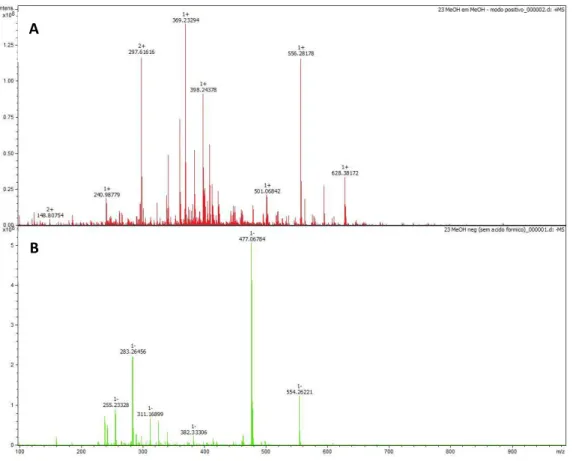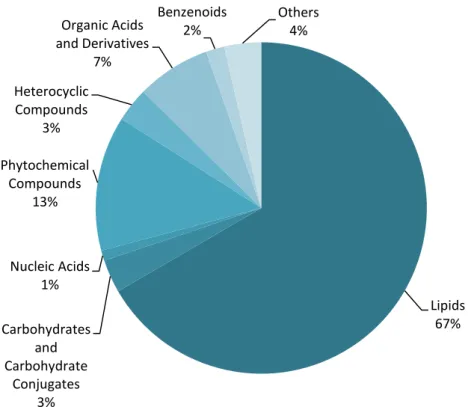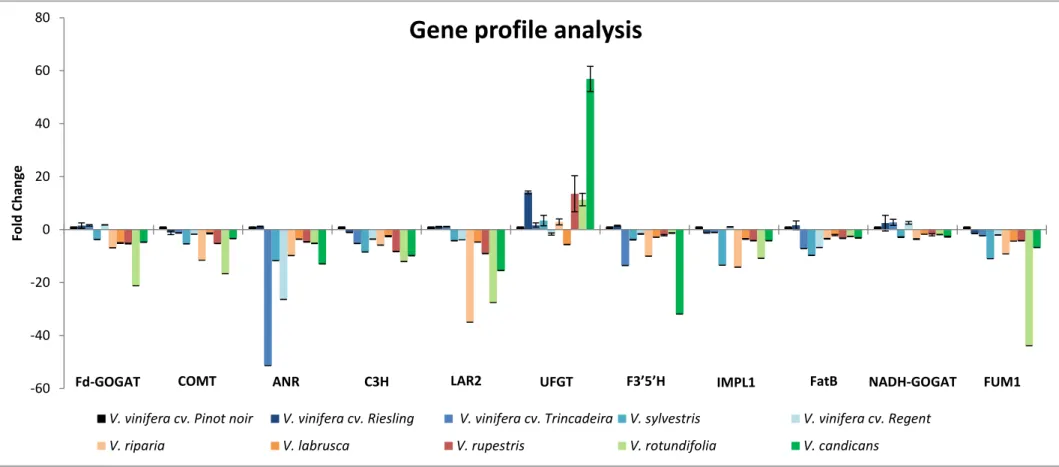Metabolic characterization of grapevine leaves: first clues towards biomarkers discovery
Texto
Imagem

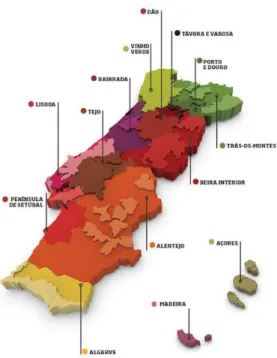
![Fig. I. 3 - Grapevine leaf surfaces infected with Plasmopara viticola, the causing agent of downy mildew [image from (Gessler et al., 2011), (CC BY-NC-ND 2.5)]](https://thumb-eu.123doks.com/thumbv2/123dok_br/19292825.994330/27.892.168.724.411.604/grapevine-surfaces-infected-plasmopara-viticola-causing-mildew-gessler.webp)
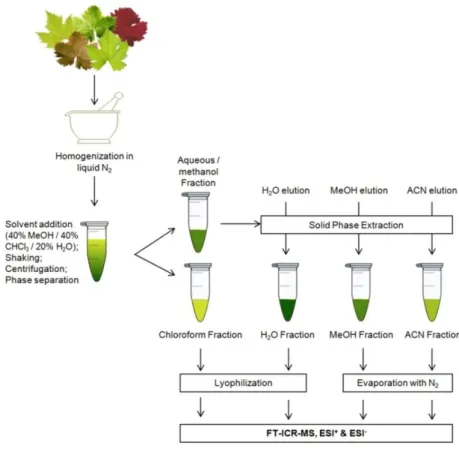
Documentos relacionados
Os resultados encontrados mostraram que as exportações brasileiras de celulose são mais sensíveis a variações na quantidade produzida internamente, no preço de exportação e na
When considering to evaluate in this article the role of attachment in the choice of tourist destination of Portuguese emigrants, this section intends to make
O Maxima vem tamb´em integrado com uma lingua- gem de programa¸c˜ao de muito alto n´ıvel, que pode ser usada pelo utilizador para expandir as suas capacidades para al´em do
The flavonoids present in sugarcane (Saccharum officinarum ) extracts were analyzed by liquid chromatography – mass spectrometry (LC-MS), and a study of the fragmentation patterns
In 2003, a method for the direct determination by gas chromatography–mass spectrometry (GC-MS) analysis of the products from the limonene
Direct infusion electrospray ionization tandem mass spectrometry in the negative ion mode with single reaction monitoring is show to allow high selectivity and sensitivity in
GC coupled with mass spectrometry (GC-MS) and Fourier transform infrared spectroscopy (GC-FTIR), as well as dimethyl disulfide (DMDS) derivatization and hydrogenation, suggested
Their structures were determined via one and two-dimensional nuclear magnetic resonance (1D and 2D NMR) experiments, electrospray ionization Fourier transform ion cyclotron

